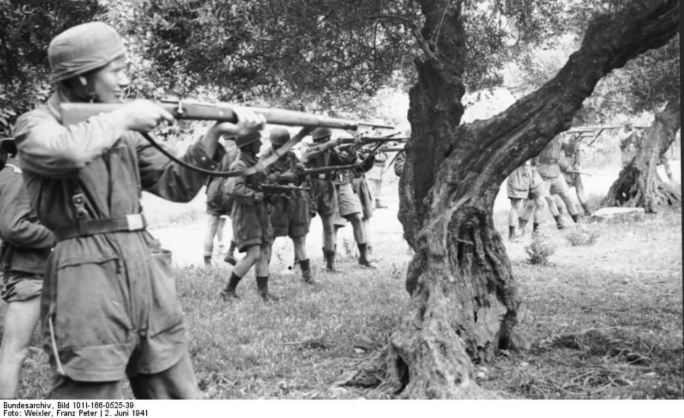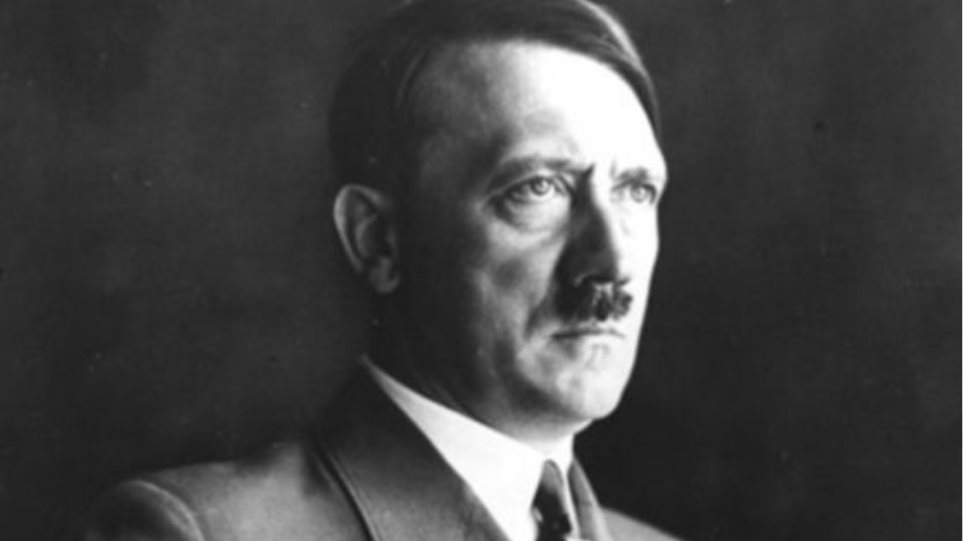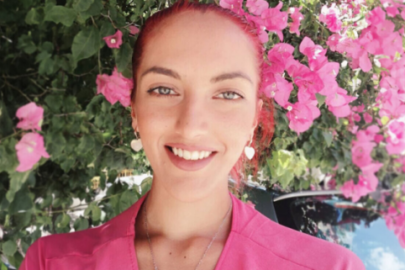A couple of years ago I made the journey to the village of Kondomari in Crete, accompanied by my friends Bruce Mildenhall and documentary maker John Irwin.
It is a beautiful drive up into the low hills to the west of Chania; as we drive past the low stone walls and olive groves the sun breaks through the trees and the scent of flowers fills the air. Soon we pass a bend in the road and we have arrived. In the distance below, down towards the sea, lies Maleme.
The little village is quiet when we arrive, it is the middle of the day, the sun is high and all are most likely inside enjoying a customary siesta. But I am on a pilgrimage. It was on Monday 2nd June in 1941 that four German trucks loaded with paratroops drove along these roads and stopped in the village.

The previous weeks had brought the German invasion to Crete. The villagers would have had a ringside view of the battles around Maleme and Chania. They would have seen the paratroops dropping, they would have heard the valiant defence by Allied troops and they would have witnessed the see-saw of battle as it finally tipped to the German’s advantage.
And some would have joined with other Cretans in fighting alongside the Allied troops. German paratroops had landed around nearby Platanias as well as Kondomari. Local fighters are recorded to have assisted the New Zealand troops in their defence of the area, inflicting severe losses on the enemy.
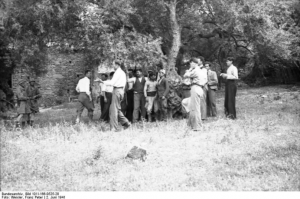
As the Allied soldiers retreated, rumours spread through the German troops that some of their war dead had been mutilated by civilians. And so it was that the Nazi Air Minister, Herman Goering, ordered the German commander of Crete, General Kurt Student, to institute an inquiry and commence civilian reprisals without formalities. As historian Antony Beevor writes, in typical Nazi fashion the inquiry followed the reprisals. This inquiry would dispel the vast majority of these rumours, finding that many of the ‘mutilated’ dead bodies had in fact been affected by the extreme heat and prevalence of carrion birds in Crete. But the wave of brutal reprisals had already commenced.
And so the thirty or so paratroopers came to Kondomari. Blaming the whole village for the deaths of a few German soldiers whose decaying bodies were found near the village, the commander Horst Trebes directed the troops to gather the villagers in the square. Importantly, the Trebe’s unit was accompanied by a divisional war photographer, Franz-Peter Weixler.
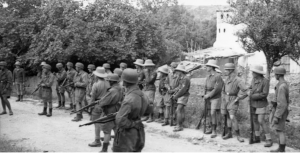
Prior to entering Kondomari, Weixler had argued with two of the paratroop officers concerning the allegation of mutilations of the dead, the purported reason for the reprisals. He told them that he had seen dead soldiers whose bodies were partially destroyed by the heat and vultures picking at the corpses. As he said, carrying out Goering’s reprisal order would amount to “outright murder.”
What followed is drawn from Weixler’s written testimony and his unique photographic record of this terrible day in the history of Kondomari.
A search of houses produced a paratrooper jacket with a bullet hole in the back. Trebes immediately order the house burnt to the ground. One of the villagers volunteered himself as having killed a paratrooper. Despite Weixler’s direct appeals to Trebes that there was no evidence against anyone else in the village and that the reprisal action should be abandoned, the commander ordered the selection of a number of village men for execution.
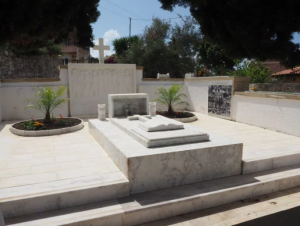
As the village men were being led to a nearby olive grove, Weixler made it possible for nine men to get away. The remainder was then led into the place of execution and shot. 23 villagers were executed that day. Weixler could not believe it and asked Trebes if he knew what he had done. The murders at Kondomari would be repeated across Crete and Greece, the destruction of the village of Kandanos taking place on the next day. And so began the reign of terror on Crete that would see thousands of civilians murdered and villages destroyed.
Read more HERE

